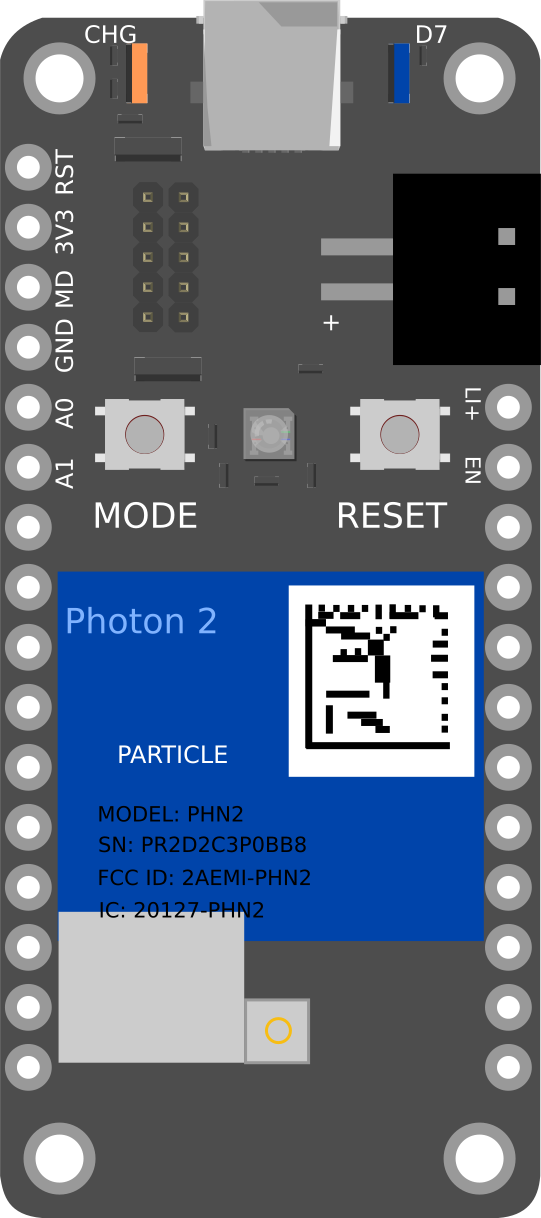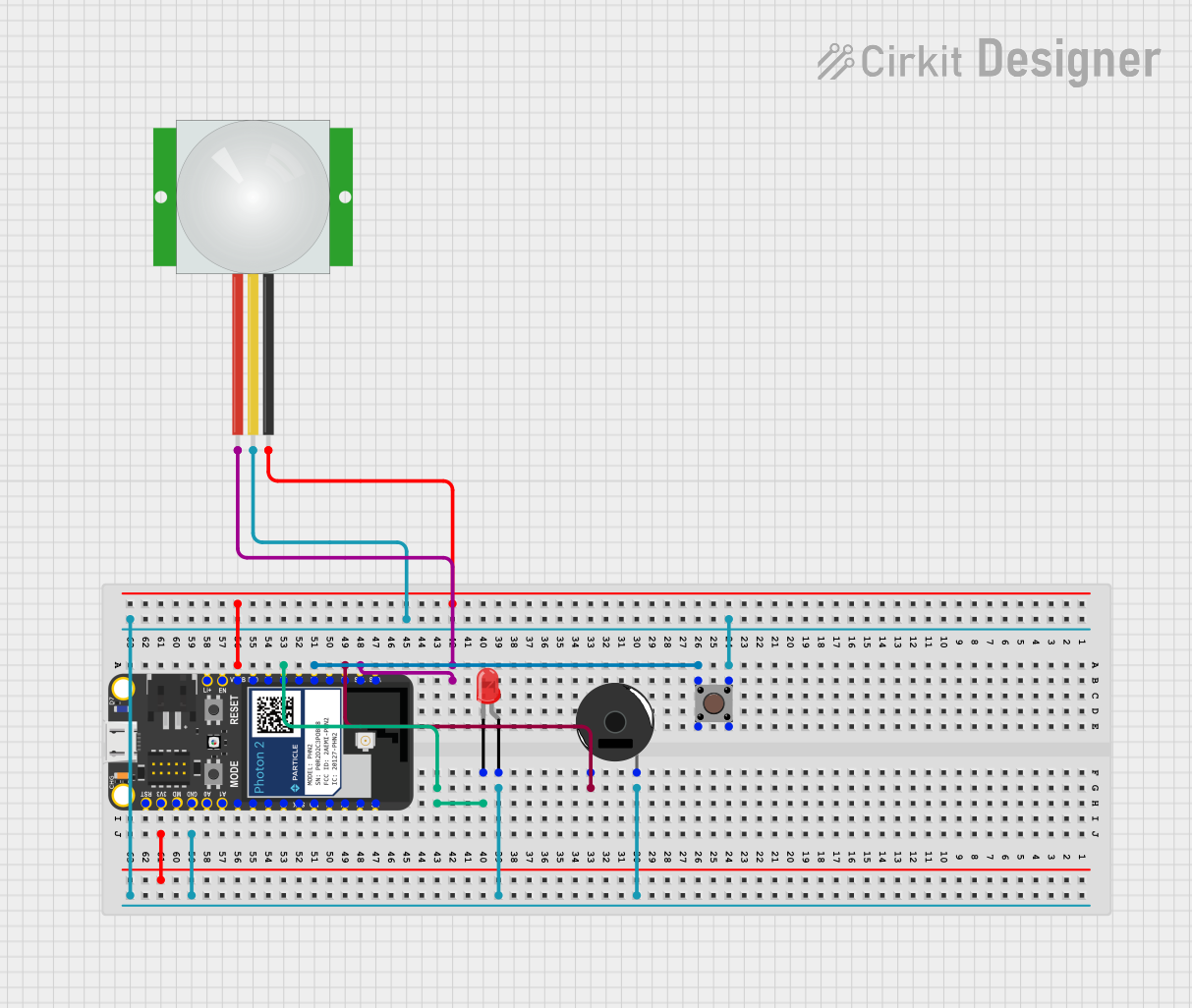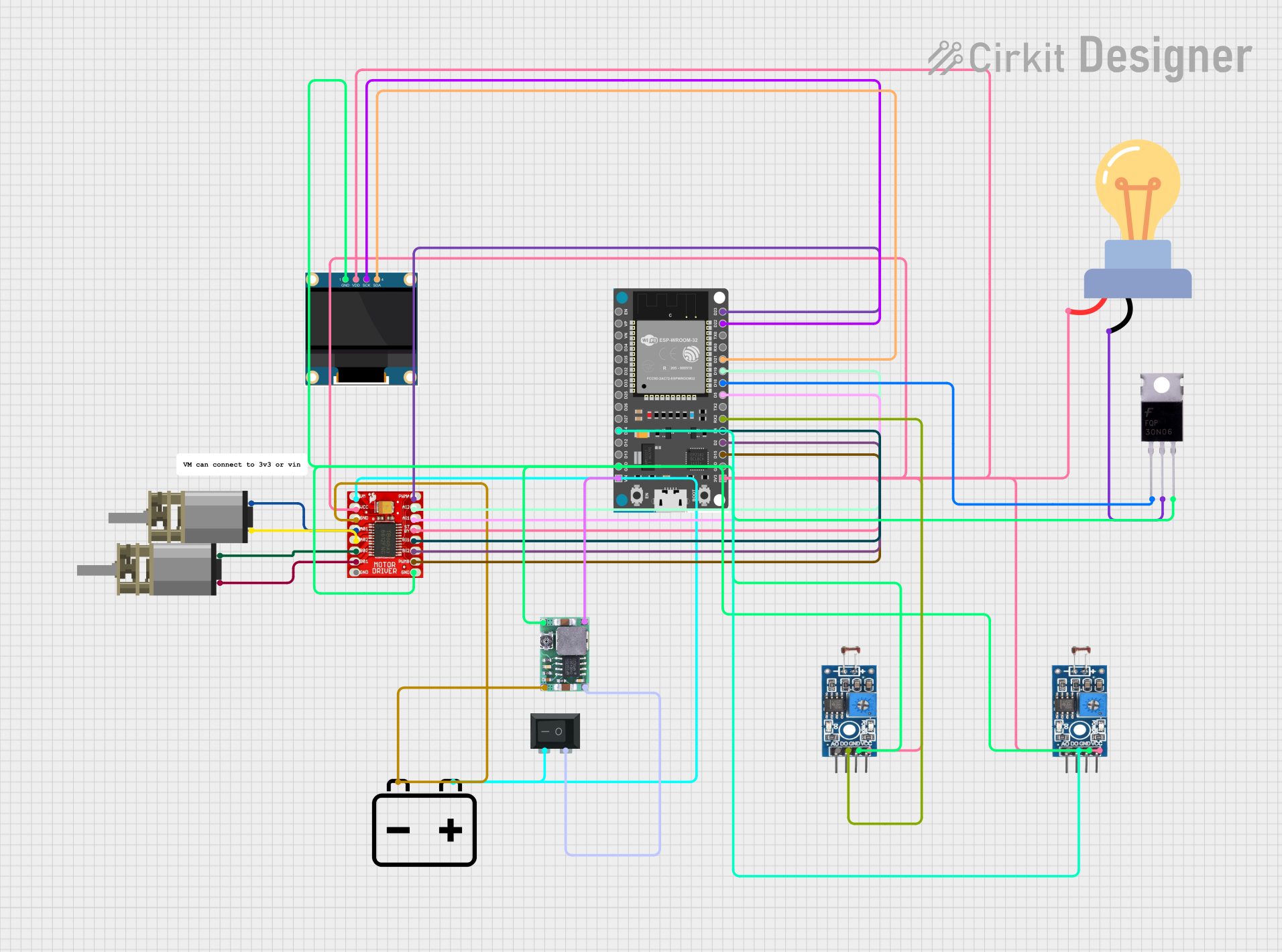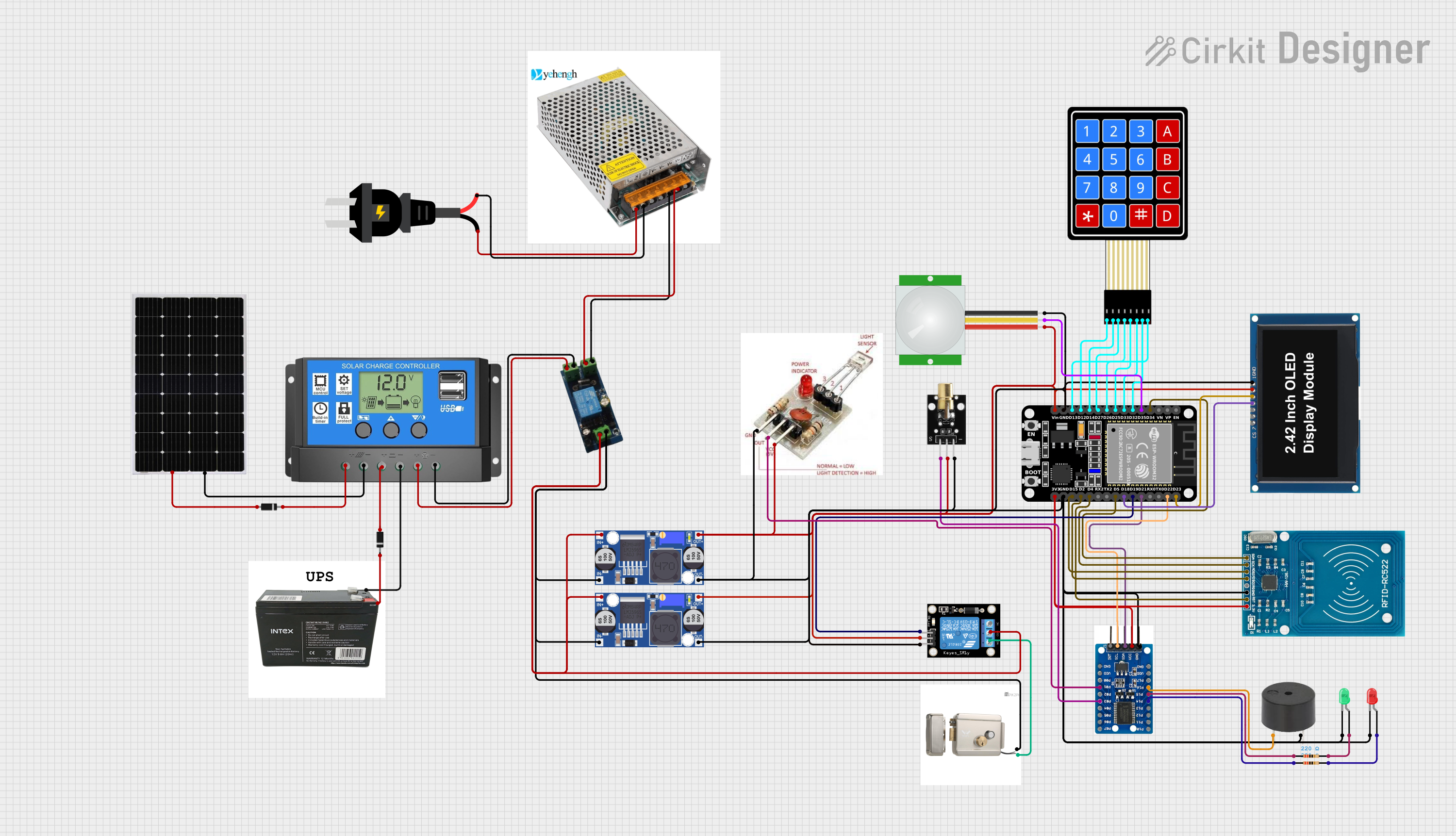
How to Use Photon 2: Examples, Pinouts, and Specs

 Design with Photon 2 in Cirkit Designer
Design with Photon 2 in Cirkit DesignerIntroduction
The Photon 2 is a compact and powerful Wi-Fi development kit designed for creating connected projects and products. It features a microcontroller with built-in Wi-Fi capabilities, making it an ideal choice for Internet of Things (IoT) applications. With its small form factor and robust feature set, the Photon 2 is perfect for both hobbyists and professionals looking to develop smart, connected devices.
Explore Projects Built with Photon 2

 Open Project in Cirkit Designer
Open Project in Cirkit Designer
 Open Project in Cirkit Designer
Open Project in Cirkit Designer
 Open Project in Cirkit Designer
Open Project in Cirkit Designer
 Open Project in Cirkit Designer
Open Project in Cirkit DesignerExplore Projects Built with Photon 2

 Open Project in Cirkit Designer
Open Project in Cirkit Designer
 Open Project in Cirkit Designer
Open Project in Cirkit Designer
 Open Project in Cirkit Designer
Open Project in Cirkit Designer
 Open Project in Cirkit Designer
Open Project in Cirkit DesignerCommon Applications and Use Cases
- Home automation systems
- Smart appliances
- Remote monitoring and control
- Wearable technology
- Industrial IoT solutions
- Prototyping and development of connected products
Technical Specifications
Key Technical Details
| Parameter | Value |
|---|---|
| Microcontroller | ARM Cortex-M4 |
| Operating Voltage | 3.3V |
| Input Voltage | 3.6V - 5.5V |
| Digital I/O Pins | 18 |
| Analog Input Pins | 8 |
| Flash Memory | 1MB |
| RAM | 256KB |
| Wi-Fi | 802.11 b/g/n |
| Clock Speed | 120 MHz |
| Dimensions | 36.58mm x 20.32mm |
Pin Configuration and Descriptions
| Pin Number | Pin Name | Description |
|---|---|---|
| 1 | VIN | Input voltage (3.6V - 5.5V) |
| 2 | GND | Ground |
| 3 | 3V3 | 3.3V output |
| 4 | D0 | Digital I/O |
| 5 | D1 | Digital I/O |
| 6 | D2 | Digital I/O |
| 7 | D3 | Digital I/O |
| 8 | D4 | Digital I/O |
| 9 | D5 | Digital I/O |
| 10 | D6 | Digital I/O |
| 11 | D7 | Digital I/O |
| 12 | A0 | Analog Input |
| 13 | A1 | Analog Input |
| 14 | A2 | Analog Input |
| 15 | A3 | Analog Input |
| 16 | A4 | Analog Input |
| 17 | A5 | Analog Input |
| 18 | A6 | Analog Input |
| 19 | A7 | Analog Input |
Usage Instructions
How to Use the Photon 2 in a Circuit
Powering the Photon 2:
- Connect the VIN pin to a power source (3.6V - 5.5V).
- Connect the GND pin to the ground of the power source.
Connecting to Wi-Fi:
- Use the built-in Wi-Fi module to connect to a Wi-Fi network.
- Configure the Wi-Fi settings using the Particle IDE or Particle CLI.
Programming the Photon 2:
- Use the Particle Web IDE, Particle Desktop IDE, or Particle CLI to write and upload code.
- The Photon 2 supports programming in C/C++.
Interfacing with Sensors and Actuators:
- Use the digital I/O pins (D0-D7) to connect to sensors and actuators.
- Use the analog input pins (A0-A7) to read analog signals from sensors.
Important Considerations and Best Practices
- Ensure the input voltage does not exceed the specified range (3.6V - 5.5V).
- Use appropriate pull-up or pull-down resistors for digital inputs if necessary.
- Avoid placing the Photon 2 near sources of electromagnetic interference to maintain Wi-Fi performance.
- Regularly update the firmware to benefit from the latest features and security patches.
Example Code for Arduino UNO
// Example code to connect Photon 2 to an Arduino UNO and read an analog sensor
// Define the pin connected to the sensor
const int sensorPin = A0;
// Variable to store the sensor value
int sensorValue = 0;
void setup() {
// Initialize serial communication at 9600 baud rate
Serial.begin(9600);
}
void loop() {
// Read the analog value from the sensor
sensorValue = analogRead(sensorPin);
// Print the sensor value to the serial monitor
Serial.println(sensorValue);
// Wait for 100 milliseconds before the next reading
delay(100);
}
Troubleshooting and FAQs
Common Issues Users Might Face
Wi-Fi Connection Problems:
- Ensure the Wi-Fi credentials are correctly configured.
- Check if the Wi-Fi network is within range and operational.
- Restart the Photon 2 and the Wi-Fi router.
Power Supply Issues:
- Verify that the input voltage is within the specified range (3.6V - 5.5V).
- Check for loose connections or faulty power sources.
Programming Errors:
- Ensure the correct board and port are selected in the Particle IDE.
- Check for syntax errors or missing libraries in the code.
Solutions and Tips for Troubleshooting
Wi-Fi Connection:
- Use the Particle mobile app to reconfigure Wi-Fi settings.
- Move the Photon 2 closer to the Wi-Fi router to improve signal strength.
Power Supply:
- Use a stable and regulated power supply.
- Double-check all connections to ensure they are secure.
Programming:
- Refer to the Particle documentation for detailed programming guides.
- Use the Particle community forums for additional support and troubleshooting tips.
By following this documentation, users can effectively utilize the Photon 2 for their IoT projects and overcome common challenges they may encounter.